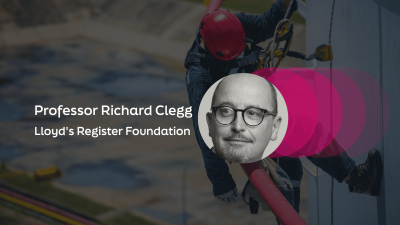
Improving access to redress for workers vulnerable to violence and harassment in South Asia
Experts discuss the factors that make some workers more vulnerable than others to violence and harassment.
This page is approximately a 4 minute read
This page was published on

The Foundation’s primary goal is to make the world a safer place. As well as physically making the world safer it is also important for people to feel safer. Hence why we’ve commissioned the World Risk Poll, to find out for the first time ever what people think about risk in their everyday lives.
By understanding the nature of safety and risk we can then identify the most significant opportunities to make changes. The Lloyd’s Register Foundation World Risk Poll is a vital start point for identifying the most pressing threats to safety, and also understanding what people worry about alongside actual experience of harm.
The World Risk Poll amounts to a major investment by the Foundation. Armed with this data we are in a strong position to embark on an extensive programme of communication with organisations across the world who are in a position to influence action to reduce risk, accidents and deaths.
It is different in a number of very significant ways. It is much wider-reaching than any research carried out by Lloyd’s Register Foundation to date – and is indeed, the biggest global study on risk and safety ever carried out.
We polled over 150,000 people in 142 countries. The poll reached many places in the world where there is no existing data about safety and risk. In the more remote corners of the world very few of the voices of the people living there have ever been heard before in research of this kind. In the World Risk Poll we asked people about the day-to-day challenges they face, from severe weather and from food and water, for example. The poll makes very important comparisons between what people worry about and the harm they have experienced – which will help us to focus attention on action most likely to reduce harm. And we are going to be carrying out the World Risk Poll three more times over the next six years adding substantially to the data and the insights it offers us.
The poll offers striking new insights in a range of different areas. Some of the most valuable findings are the differences between what people worry about and what risks they actually experience. This difference is known as the ‘risk perception gap’. By identifying differences between people’s thoughts about, and experiences of risk, regulators, businesses, governments and researchers can work with communities to develop relevant and relatable policies that empower people to take action, that save lives and help them feel safer.
Drilling down into the poll data, many detailed facts about safety and risk emerge. For example, we know the most dangerous occupations to work in across the world, and what is causing workplace harm in different countries worldwide and in different groups of people. We also know the countries where people are worrying most about everyday risks, and the extent to which this is driven by their experience of these risk. We have new insights into who people look to for information to keep them safe. We see patterns emerging about the risks that women face across the world and we understand public perceptions of risk on wide ranging subjects from climate change and technology to the internet and food and water.
Building up a picture of change over a total of eight years will really alter the perspective we have on safety and risk, showing us how worry and harm change in that period. We anticipate identifying changes in all kinds of areas of risk, hopefully showing where initiatives to improve safety are having an impact, and illustrating perhaps how some efforts to achieve change can be altered and improved. That is exciting in its own right however the value of the on-going research has taken on a new dimension in the light of COVID-19. The World Risk Poll is in a fascinating position to be able chart how attitudes to safety have changed following the pandemic, setting a unique benchmark from 2019 against which future assessments can be measured.